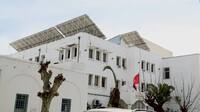Energy Cities use energy sustainably
Cities are driving the global economy. This is where markets flourish, where the ideas of tomorrow are born. The sustainable and efficient use of resources is increasingly becoming a decisive competitive advantage.
Energy-efficient solutions offer the opportunity to position cities as sustainable business locations that not only promote growth but also protect the environment and are attractive in the long term for investors, companies and residents.
Energy-efficient solutions offer the opportunity to position cities as sustainable business locations that not only promote growth but also protect the environment and are attractive in the long term for investors, companies and residents.
Cities that consume less energy, use renewable energy and emit less CO2 receive the ‘Energy City’ label. The idea for this originated in Switzerland. The concept has proved a success and is now used internationally under the ‘European Energy Award (EEA)’ label.
SECO supports its partner countries in introducing the ‘Energy City’ concept in their cities. The measures to be implemented and the extent to which the criteria for a ‘label’ must be met are determined by local committees in cooperation with the city authorities.
From concept to practice
Photovoltaics in Bizerte, sustainable heat supply in Zhytomyr and energy transition in Berat: discover three energy projects co-financed by SECO.
Bizerte
Photovoltaics on the roofs of Bizerte
Bizerte is a lively coastal city in the far north of Tunisia. Along with neighbouring communities, it forms a key industrial and commercial centre for North Africa. Thanks to its many hours of sunshine, Bizerte can operate photovoltaic systems effectively.
With SECO’s support, Bizerte has installed five photovoltaic systems on the roofs of local administration buildings. These systems achieve an output of 154 kilowatts peak.
Solar energy is enabling Bizerte to reduce its dependence on fossil fuels and import less energy. This is increasing security of supply, while also reducing and stabilising energy prices.
Lower energy costs are allowing the city to invest more in its sustainable development – for example, in environmentally friendly waste disposal and sustainable public transport.
Ukraine
Sustainably produced heat in Ukraine
Ukraine’s district heating network is outdated. A great deal of heat is lost, leading to extra costs for the population, companies and municipal administrations. Energy security is suffering, and greenhouse gas emissions are rising.
In the city of Zhytomyr, SECO has helped to modernise a local district heating network.
A new woodchip-fuelled heating plant has replaced the old gas-fired boilers. Well-insulated pipes carry the heat underground to the buildings, where people can regulate temperatures individually.
Around 18,000 residents now have a more reliable, efficient and cost-effective heat supply during the long, cold winters.
In war, this decentralised infrastructure offers an additional advantage: if large, centralised power stations are attacked and destroyed, people in surrounding areas can still heat their homes.
Berat
More light, less energy: sustainable street lighting in Berat
Berat, the 2,300-year-old “town of a thousand windows”, is a UNESCO World Heritage Site, located in the heart of central Albania, around 70 kilometres south of Tirana. Berat is famous for its densely clustered buildings and their impressive windows. However, the city has also recently become a flagship for modern, sustainable street lighting.
In order to use energy more efficiently, the Municipality installed new LED streetlights along Berat’s main transport routes. This is part of the Smart Energy Municipalities, a SECO project.
Around 70 per cent less energy is now consumed over a distance of four kilometres. This new public lighting system also reduces costs, increases safety and quality of life for the community.
Scroll down to continue
Swipe to continue
Swipe to continue






















 Energy Cities use energy sustainably
Energy Cities use energy sustainably















